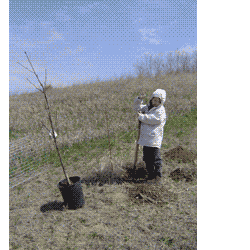
The previous spring
I asked Ron Frahm about discing up the field and he generously volunteered to do it. The window of opportunity was short this time, and the winds were very high. Once the soil is disturbed, you have until the first rain to get it seeded, or run the risk of having to disc it again. With three of my kids, 40 pounds of grass seed, and four acres of tilled up ground, we set out planting.
Before Ron arrived, I saw the first apple and cherrys from trees we planted. It was an exciting moment, years in the making.
Most people raise their eyebrows and offer a sly grin when you say how fun it is to plant grass this way, but a few know and understand the connection to generations of humanity. Planting, not for a maintenence free yard, but for food.
About two of the four acres getting tilled
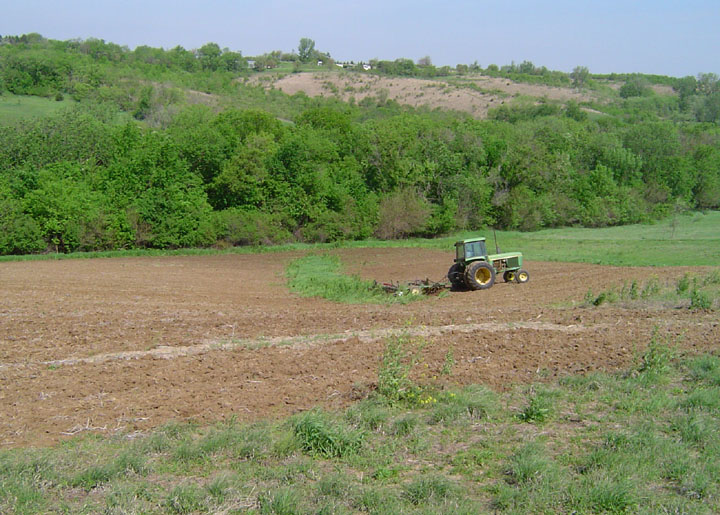
Rustic Inn
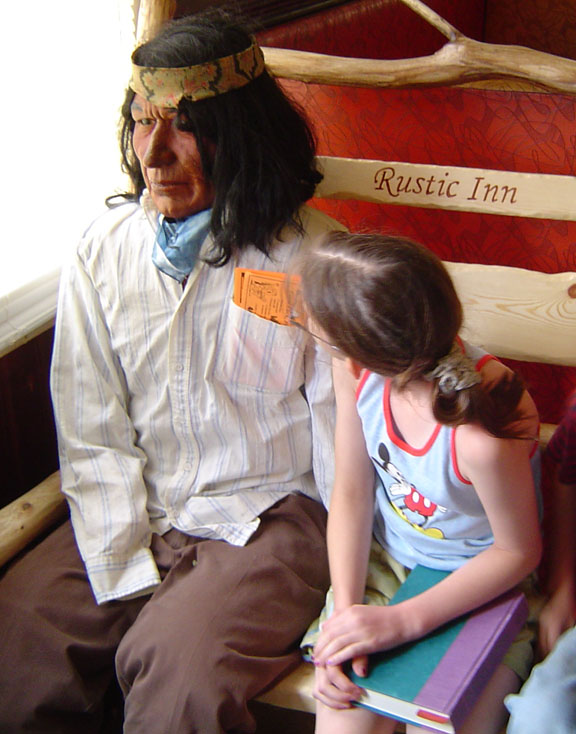
As we planted, we found out what worked and what didn't. The strap-on whirly-gig planter was fine for a 'johnny appleseed' satchel, but the spreading mechanism does not work for larger grass seeds, like the sideoats grama. We ended up walking and spreading seed, into the blowing wind, by hand. Back and forth, across the freshly turned soil, we used our previous footsteps as a guide for where to walk for the next 'row'. I felt kind of like an apeman, reaching low with a hand full of grass seed. My children quickly got the hang of marking the row ends and refilling bags from big bag in the car.
I used about 10 pounds per acre and I am sure there are many blank spots. As the day wore on, we had grass seed in pockets, shoes, sticking out of clothing. Seeds are amazing things. They passively work their way into the soil with the wind. Each variety has its own scheme. The wind was blowing so hard I had to throw the seed at the ground so that it might land near the row I intended.
That last 1/3 of an acre was the worst. I used quite a bit of 'blue grama' and the wind was whipping it 15 feet away. At one point I noticed something falling out of the clear blue sky. Blossoms. It was raining flowers blossoms from the Black Locust trees in the area. That tenacious thorny tree, it was said, was planted in this area by the civil war soldiers from the south. Apparently it reminded them of home.
In all that day, we tried some Blanketflower, Little Bluestem , but mostly Sideoats Grama and Blue Grama. My feeling is that tilling the field every year, planting, spraying harvesting, is hard on the land. I know many farmers might disagree about that. I am anxious to see what the land does on its own, with just a little head start of some grass seed. I want to see if the absence of runoff of 'Round-up' ( weed killer) from the field will have a positive effect on the trees at the bottom of the hill.
Toward the end of the day, tired, sunburned, cursing the wind, we drove to the Rustic Inn to rest and have a bite to eat. Their steak sandwich is a pretty good for $6.50. The kids like the Sioux City Sarsparilla and the chicken strips.
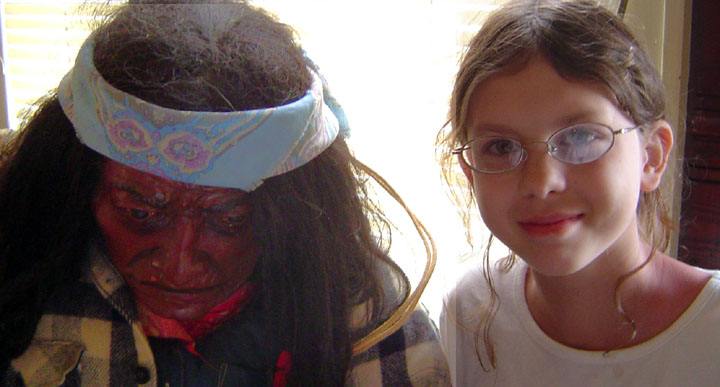
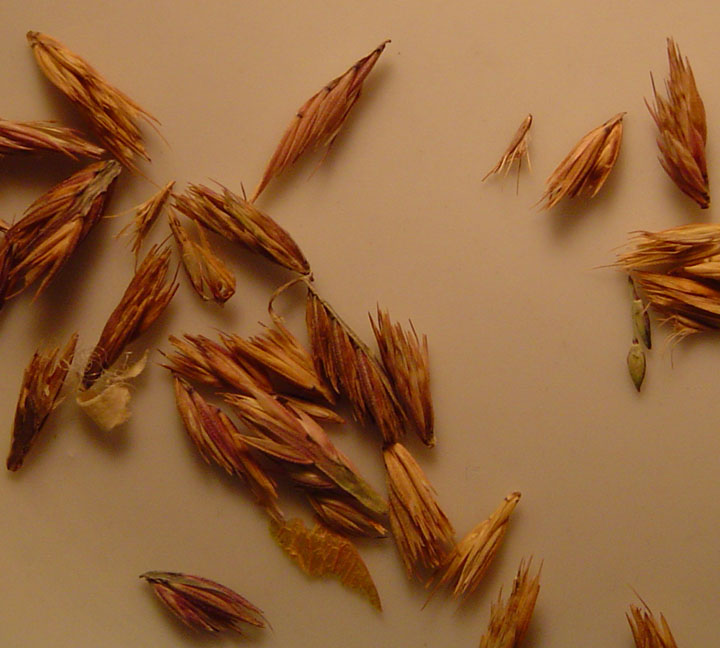
'sideoats grama' seeds
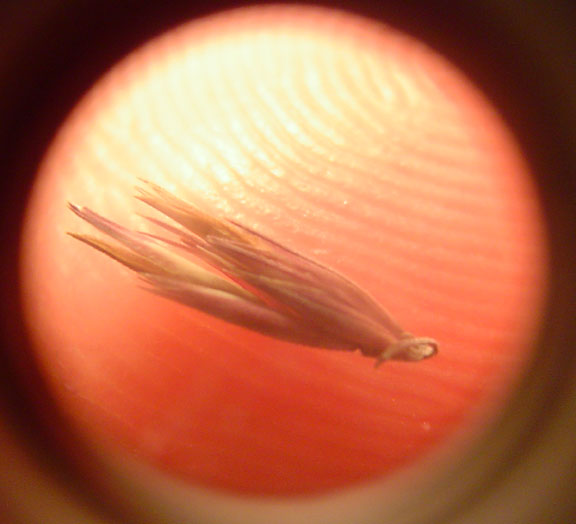
I bought the seed several weeks ago. This time I went to Stock Seed Farm, in Murdoch. If you like, they can send you seed anywhere in the world from their operation here in Nebraska. If I had known better, I could have harvested the seed from my first acre. They were nice to deal with and not too expensive. It was around $230 for the seed. The first time I think I paid close to $80 less than 1/4 the pounds. It really pays to drive to smaller towns. In this case, about 30 miles out of the city. They sell by the pound, PLS, which means 'pure live seed'. Essencially, it gives you more bulk, which makes it easier to spread over large areas.
As I learn more about the land, I am less worried about a few weeds and having to keep it mowed, and more excited about the possibility of lush natural life. I write about these things because I, being a city person, am very ignorant of some of the simplest rural things. My friend who took us turkey hunting has hundreds of acres of native grass in the CRP program, a government program that pays farmers to restore cropland to natural prairie, and due to the program, they eradicate weeds. He surprized me by lamenting the absence of weeds. Weeds are a lush habitat for wildlife, he explained.
Well, for the next couple of years, before my grass kicks into high gear, the wildlife will be pretty happy on our acres. I am sure there will be LOTS of weeds.